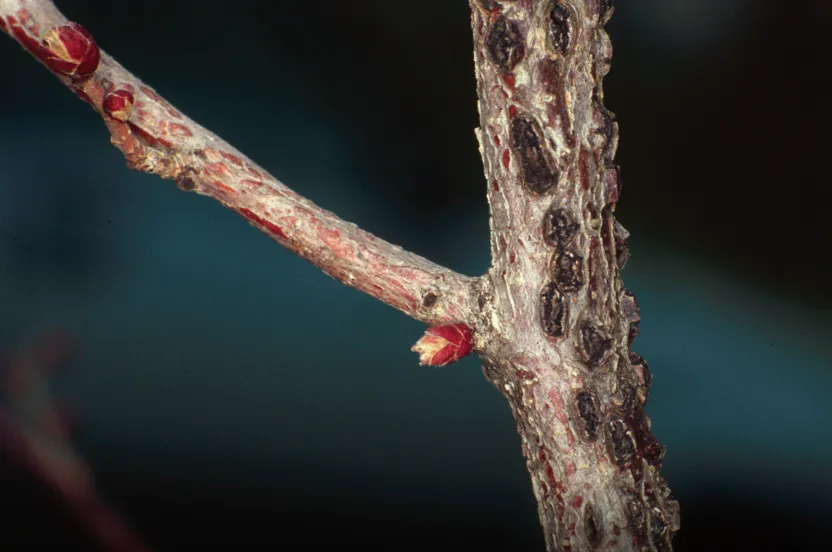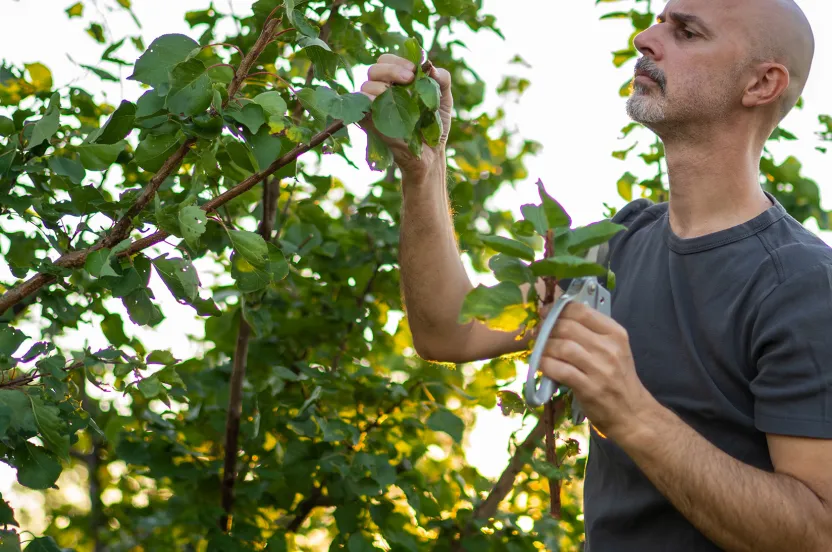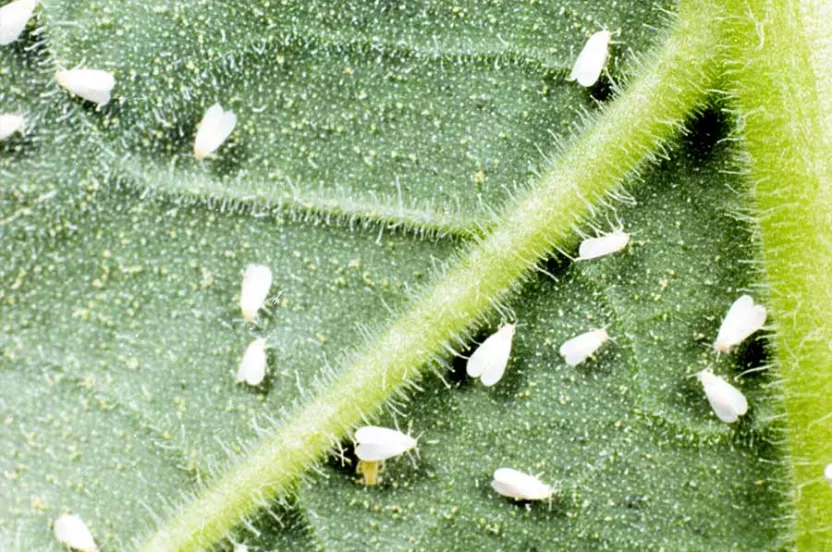Now live: The 2025 Canopy Report. Learn how Americans see trees. GET THE REPORT
Maintenance & Health
Japanese Beetle
First introduced to the U.S. in 1916, Japanese beetles now wreak havoc on over 400 plant species, from roses to fruit trees. These shiny, coppery-green pests not only skeletonize leaves but also produce larvae that destroy grass roots, leading to lawn damage.
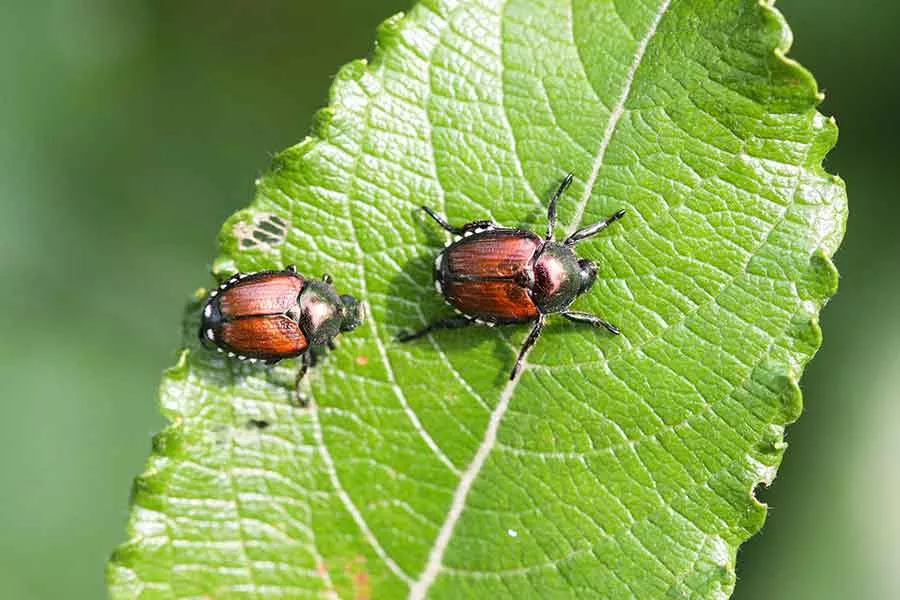
What is the Japanese Beetle?
These shiny, coppery-green, ½-inch long beetles entered the United States in 1916, purportedly hidden in a shipment of irises from Japan. Prior to its export, the Japanese beetle was known to occur only in Japan, where it is not a major threat to native plant species.
Japanese beetles feast on more than 400 plant species, feeding in large groups between leaf veins and classically skeletonizing the foliage. They also feed on flowers and fruit. Favorite plants include roses, crabapples, pin oak, hibiscus, grapes, raspberries, linden, crape myrtle, sassafras, Japanese maple and Norway maple.
Adult Japanese beetles have a short life span: 30–45 days on average. They have a high rate of reproduction: females feed, mate and lay eggs every 24– 48 hours. At each egg laying, female beetles deposit 1–5 eggs 2–4 inches deep in soil.
The white, wormlike larvae—also known as grubs—that hatch from the eggs are the nation’s most pervasive turf pest. Grubs devour grass roots, making water absorption impossible and ultimately killing the grass. Their feeding produces irregular brown spots in a lawn. High numbers attract predators like skunks, raccoons, moles and armadillos, which dig up turf to unearth grubs. Beetle grubs also feed on other plant roots.
About the Japanese Beetle
Threat
What is the threat?
Every summer Japanese beetles devastate lawns and gardens. Although they will seldom kill trees or shrubs, they can slowly weaken them, making them subject to secondary pests and disease. The estimated damage and cost of controlling Japanese beetles in the United States is over $460 million each year.
Where is it?
Japanese beetles are still invading the United States. Established populations are most common east of the Rockies and in the Midwest. Small pockets of beetles, however, have been identified on the West Coast. Adult beetles conquer geographical barriers by hitching rides on freight, vehicles or even air cargo. Eggs and grubs travel in soil of nursery stock.
What can you do?
Contact your local cooperative extension office for information on control options and proper timing of applications.
When planting, consider trees and shrubs seldom damaged by Japanese beetle feeding, including boxwood, red maple, flowering dogwoods, hollies, magnolias and lilacs.
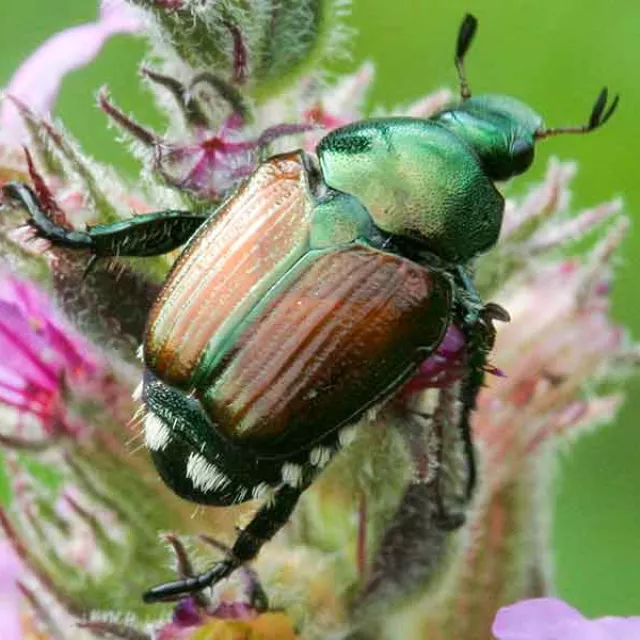
Helpful Resources
Managing the Japanese Beetle: A Homeowner's Handbook, published by the USDA, covers control measures and includes lists of plants that resist Japanese beetle feeding.
Information provided April 2015, courtesy of the Bayer Advanced Healthy Trees for Life initiative. Bayer®, the Bayer Cross® and Bayer Advanced™ are trademarks of Bayer. Photos by Steven Katovich, USDA Forest Service, Bugwood.org and David Cappaert, Michigan State University, Bugwood.org.
